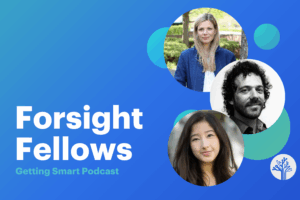Who Will Work in Schools of the Future?

Robin Lake, CRPE, filled in for Rick Hess last week. One of her great EdWeek blogs asked who will work in schools of the future?
Even though Robin was probably referring to me as an “annoying and hyperbolic” edtech evangelical, we both agree that “The best technological innovations really are transforming the way kids learn and the way schools are organized.” That’s the difference between edtech layered on top of how we’ve always done school and real blended learning.
Real blended learning is a shift to an online environment for a portion of the day to drive learning and operating productivity. That’s an important distinction in what Robin’s colleague Marguerite Roza calls “The Decade of Deficits.”
Robin goes on to describe the differentiated staffing model at blended schools. Here’s three key aspects:
- Blended schools use technology to leverage the talent of great teachers and give them longer contracts, higher pay, and supervisory responsibility. See Opportunity Culture for more.
- Teachers work in teams. For example, three math teachers take responsibility for 600 middle school students with support from two aids and a block of online tutors.
- Specialists work anywhere and are available everywhere to address special needs, advanced topics , and to offer courses not locally available
Robin wants to start by “mapping the skill sets required for people who will teach in and run the schools of the future.” That’s probably a good idea but I’d add that it should be done using a portfolio lens. Robin’s shop is the leading advocate of portfolio districts, a variety of approaches to creating quality options. This will be even more important with the growth of online and blended learning. It’s very different teaching at a Big Picture school than a KIPP, it’s different teaching at Carpe Diem than Florida Virtual.
The weak generic preparation that most teachers receive is quickly becoming even less relevant. Increasingly we’ll need to address talent development by school model and network rather than as a homogenous task. That’s why Digital Learning Now recommends performance-based certification.
Rick does a great job finding guest bloggers and Robin made great contributions last week. This reminder that talent development and staffing patterns look different in the future–and that has big implications for state and district policy as well as next year’s budget.
For more, see 24 Getting Smart blogs about blended learning and 10 reasons teachers love blended learning







0 Comments
Leave a Comment
Your email address will not be published. All fields are required.